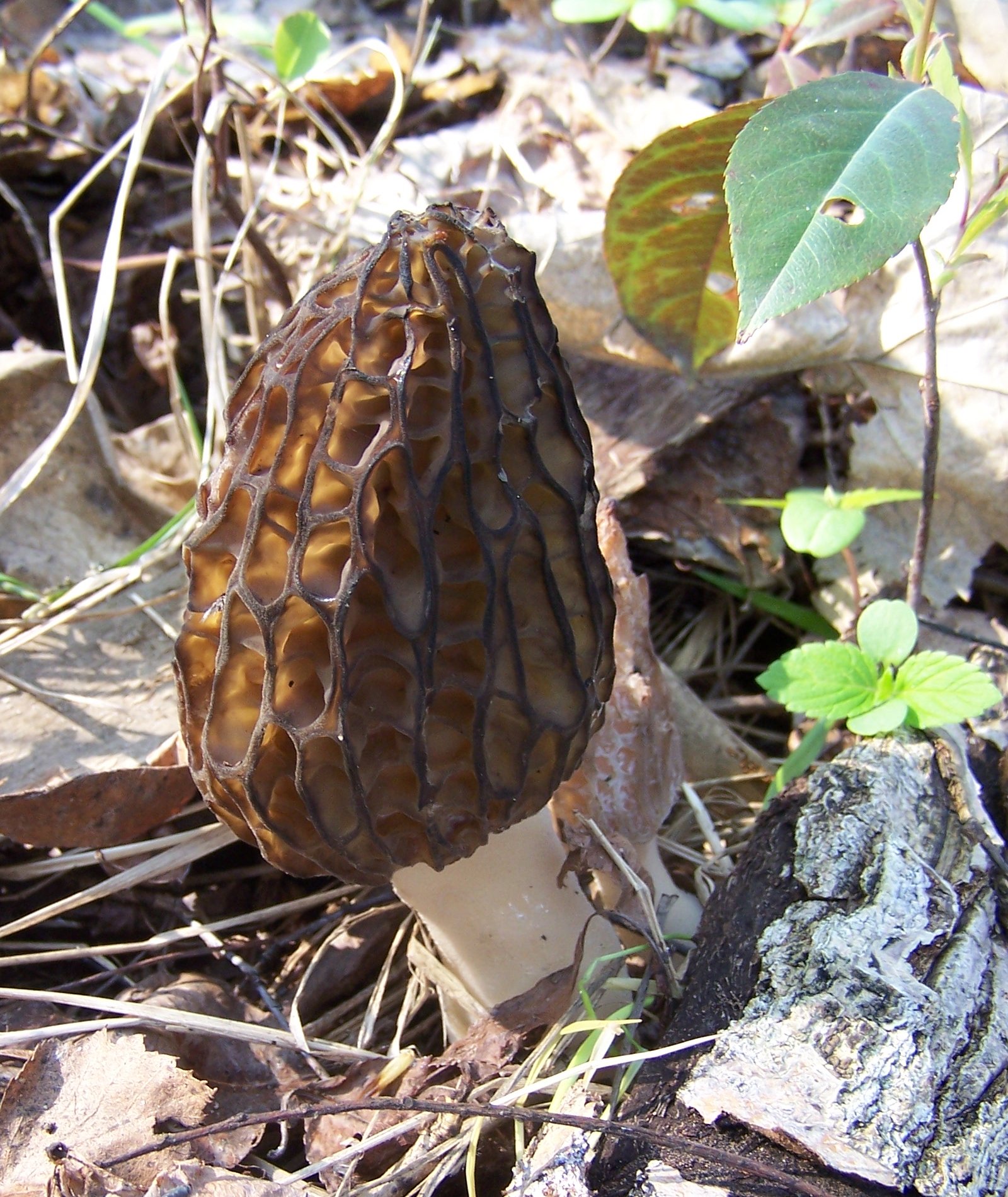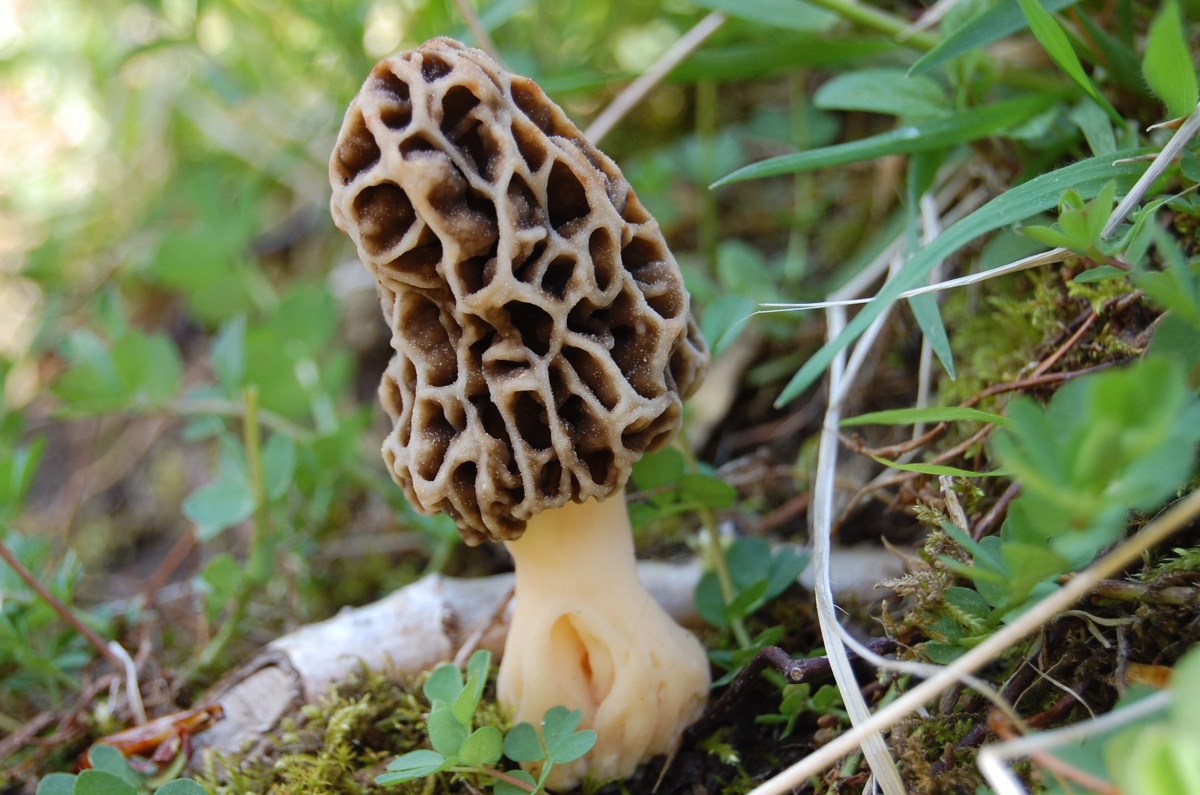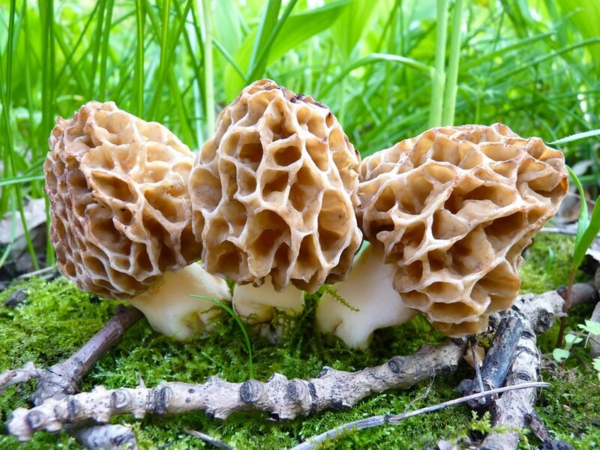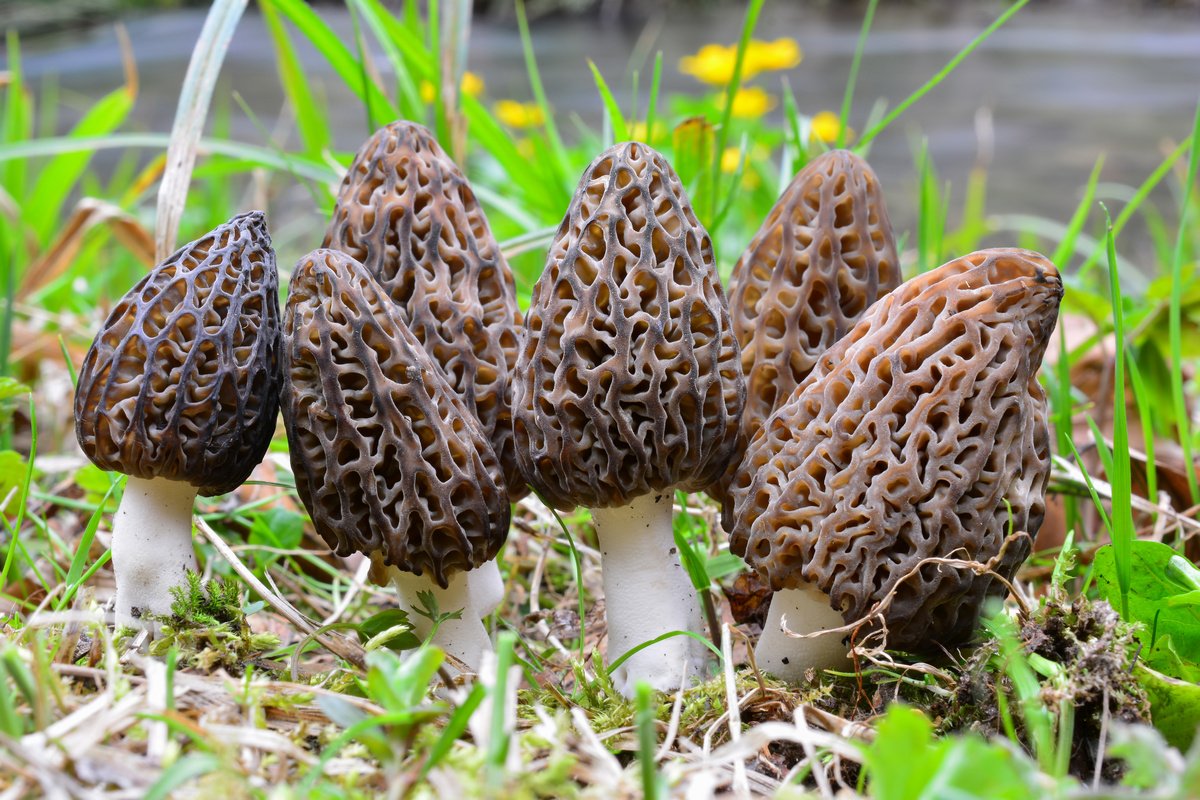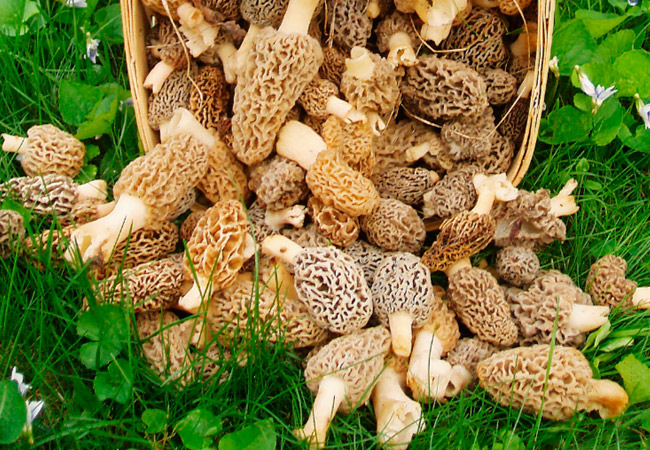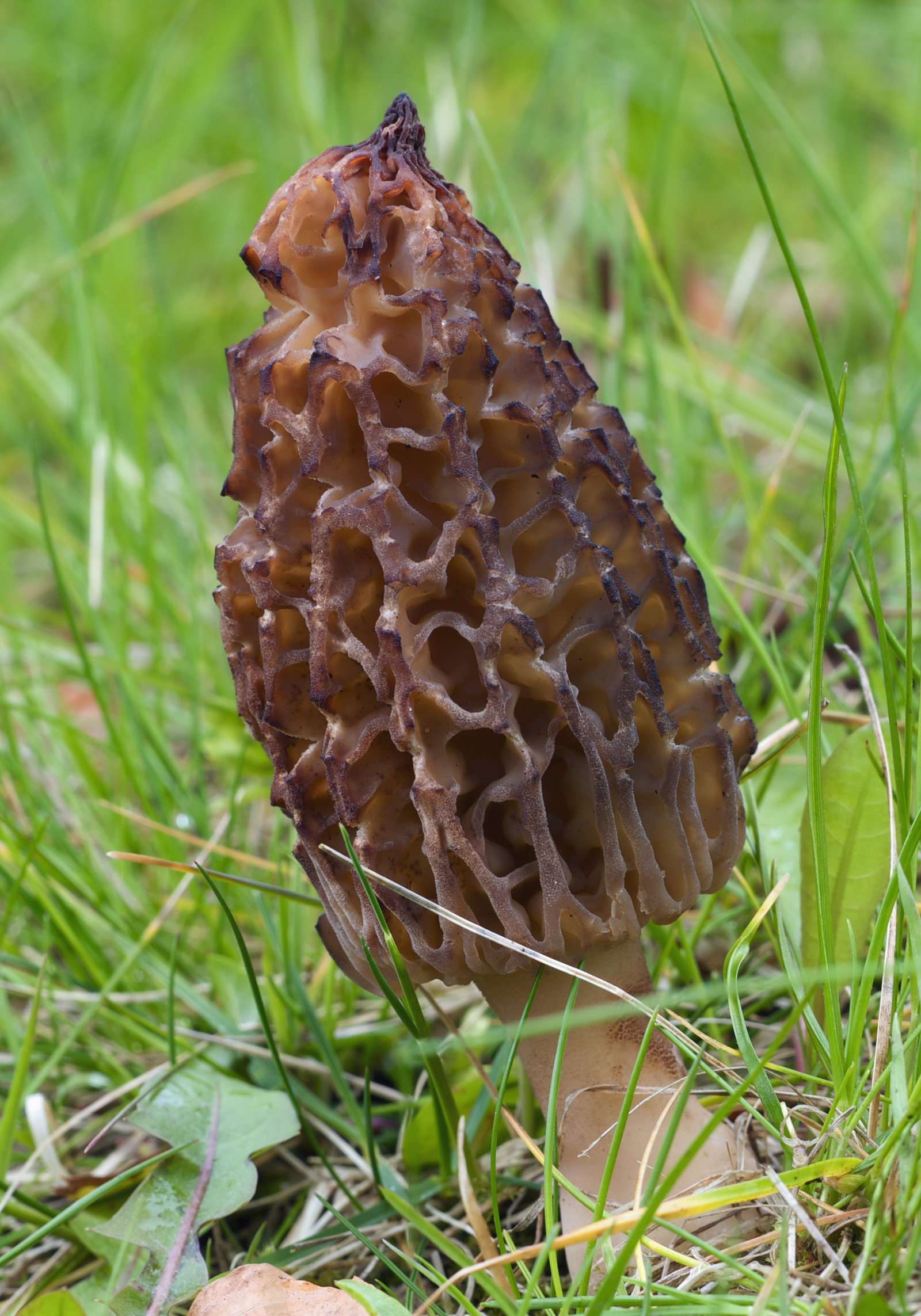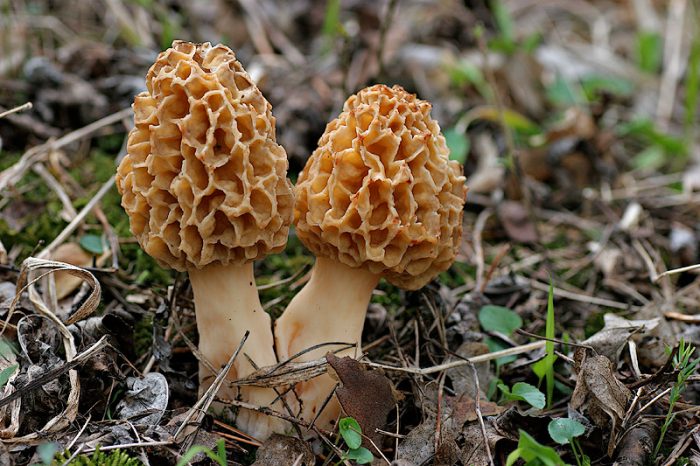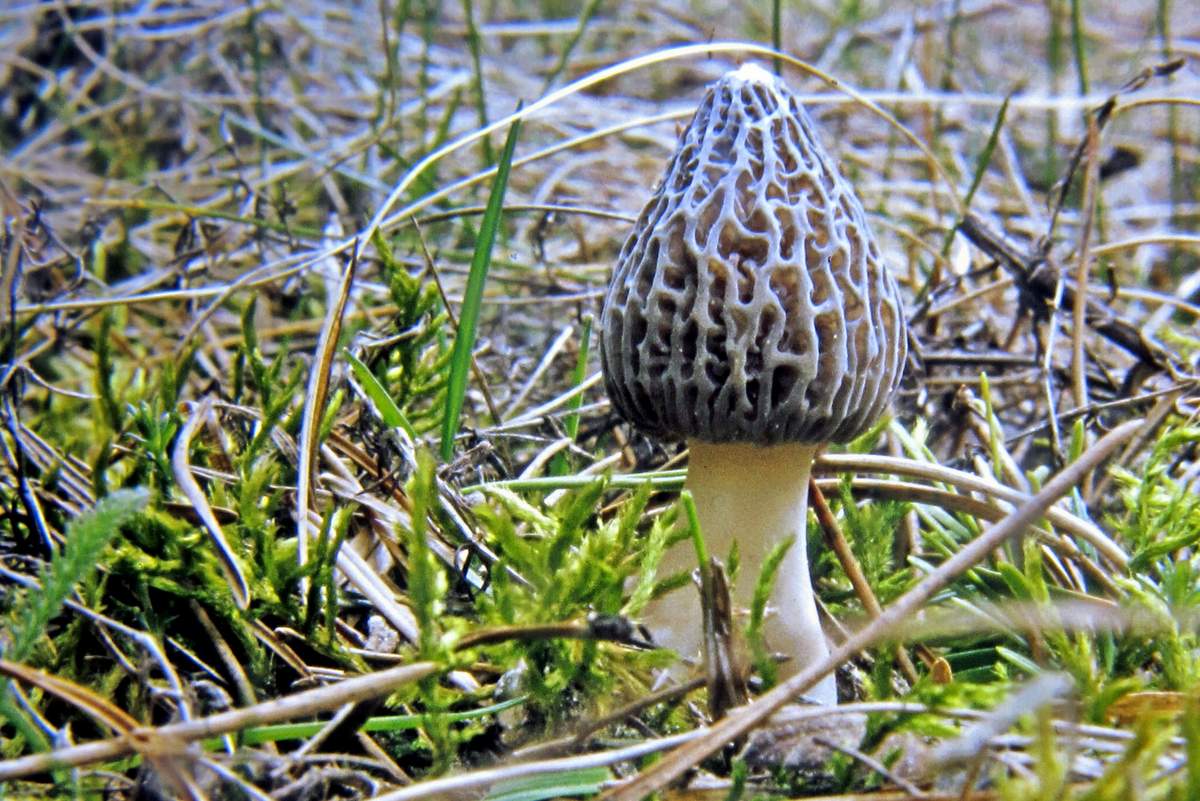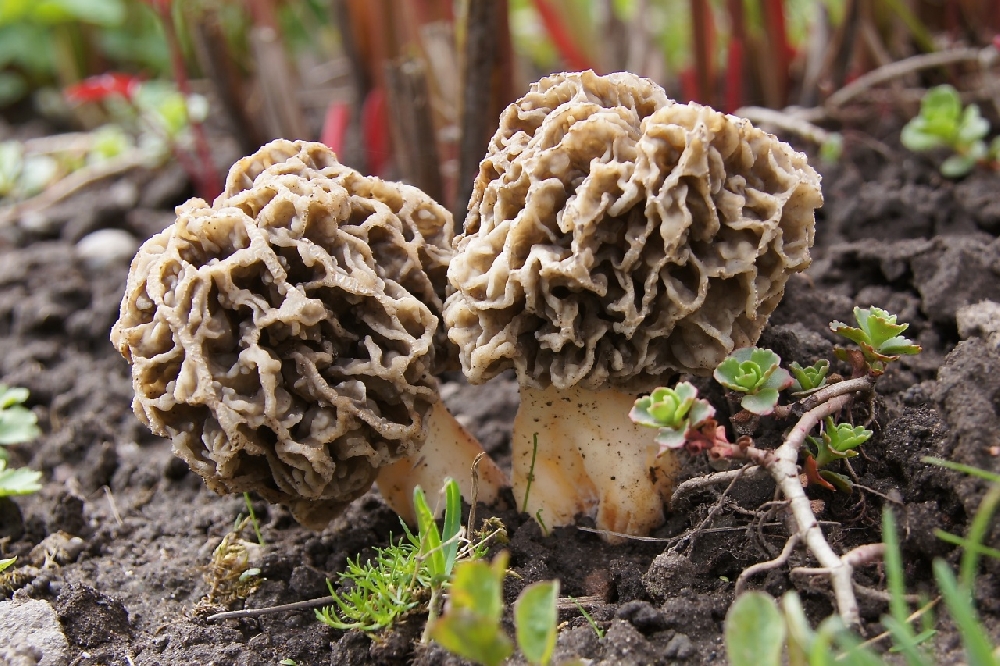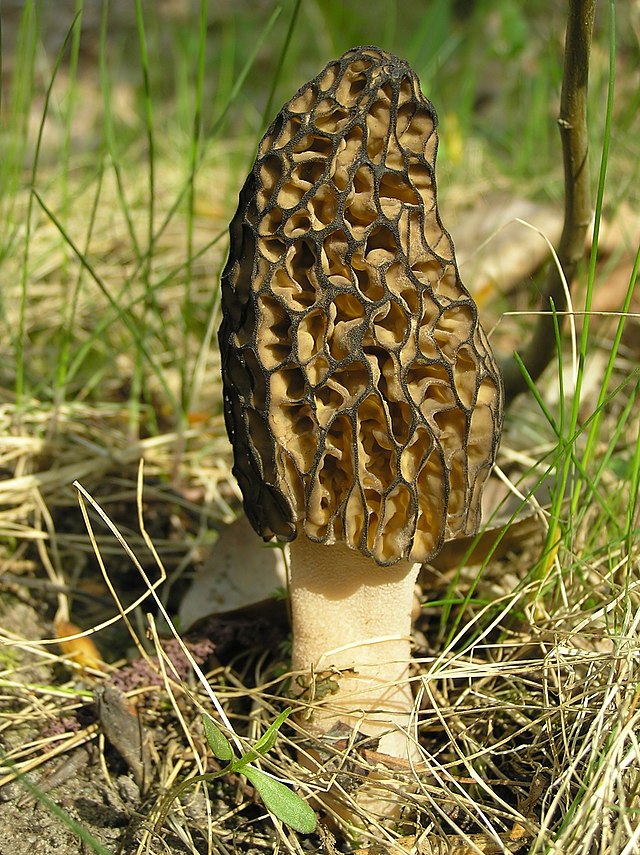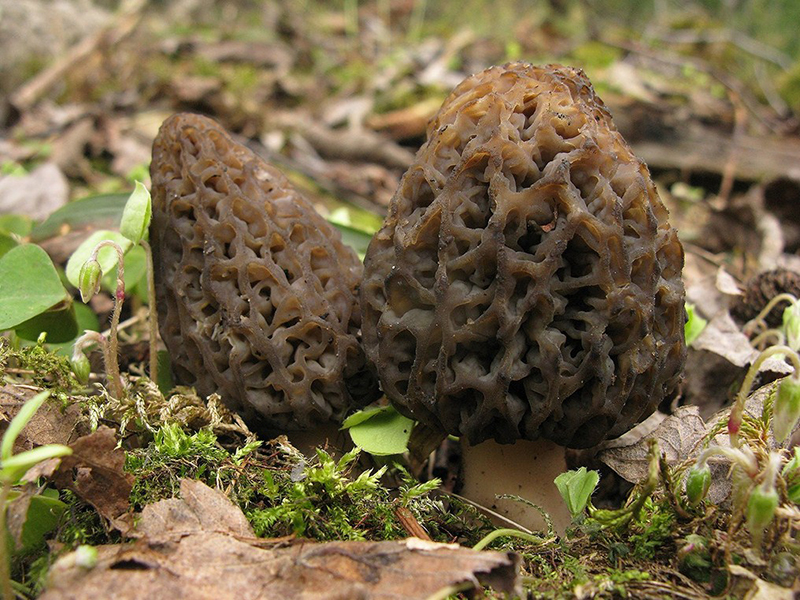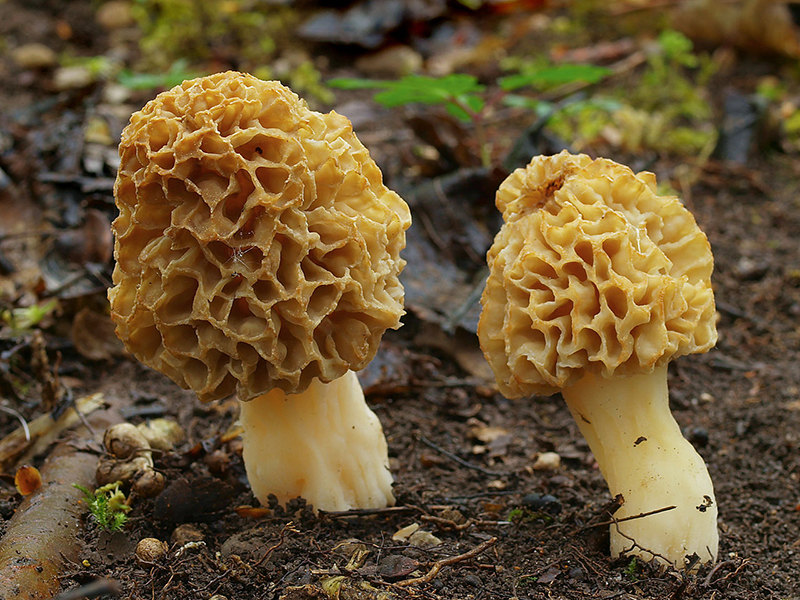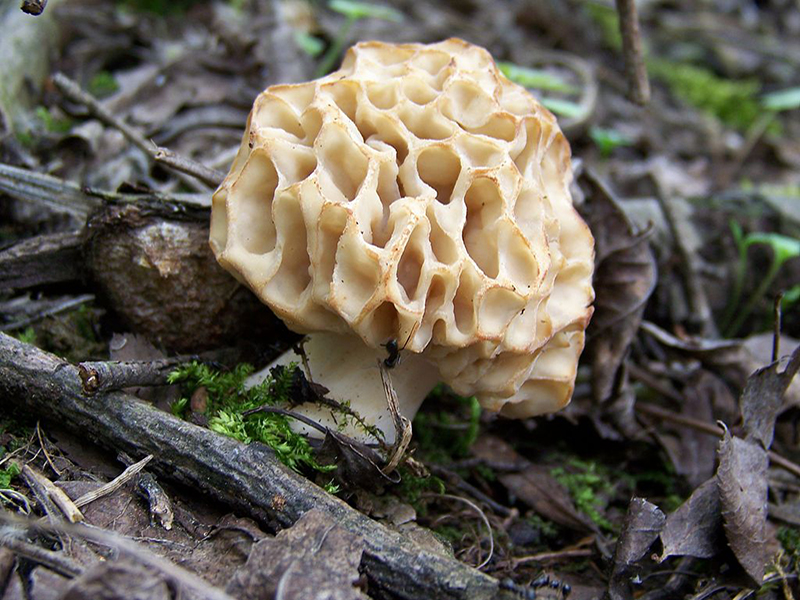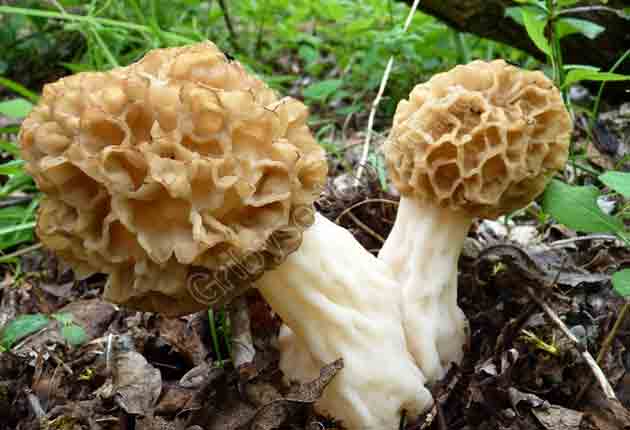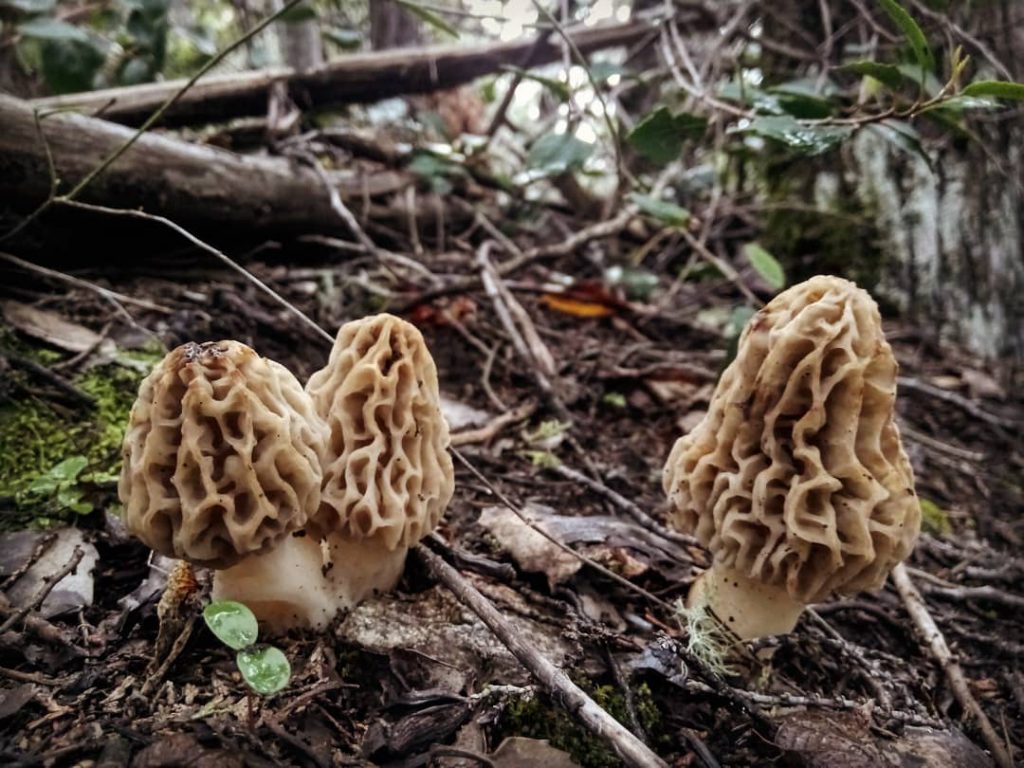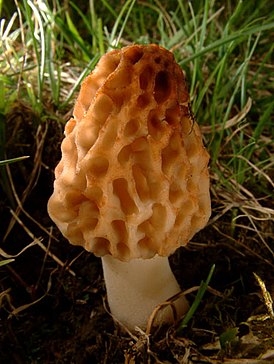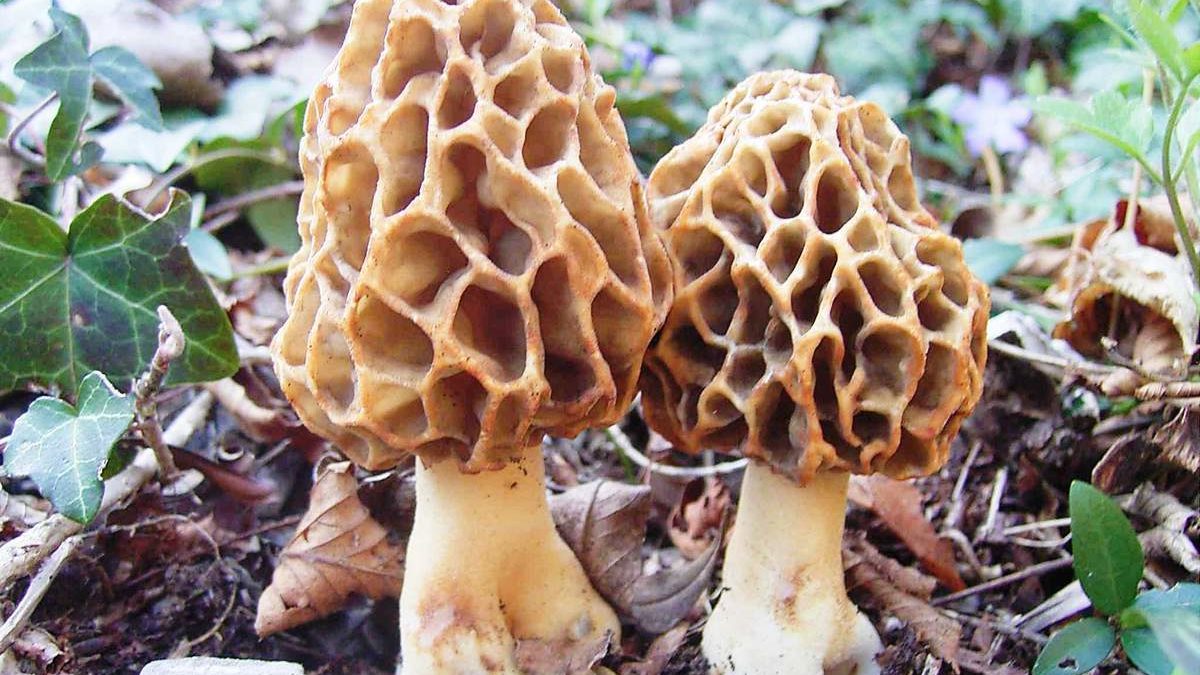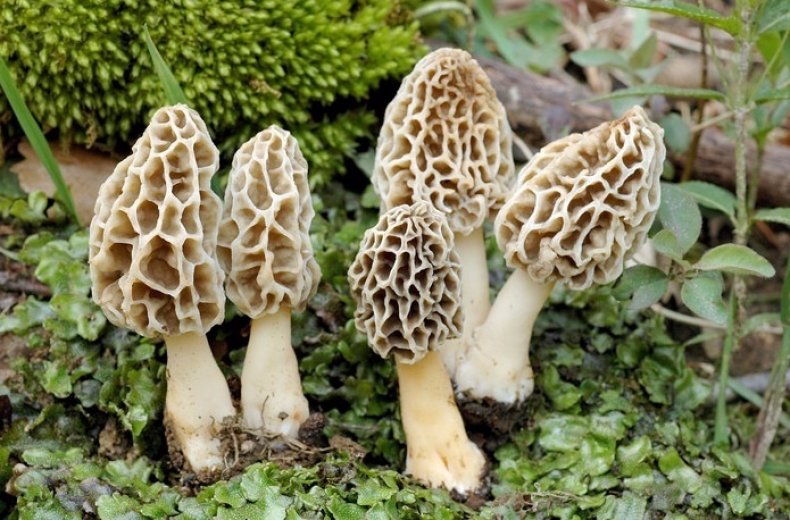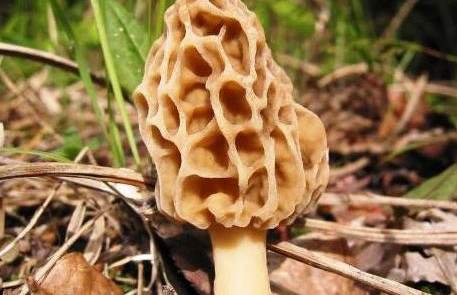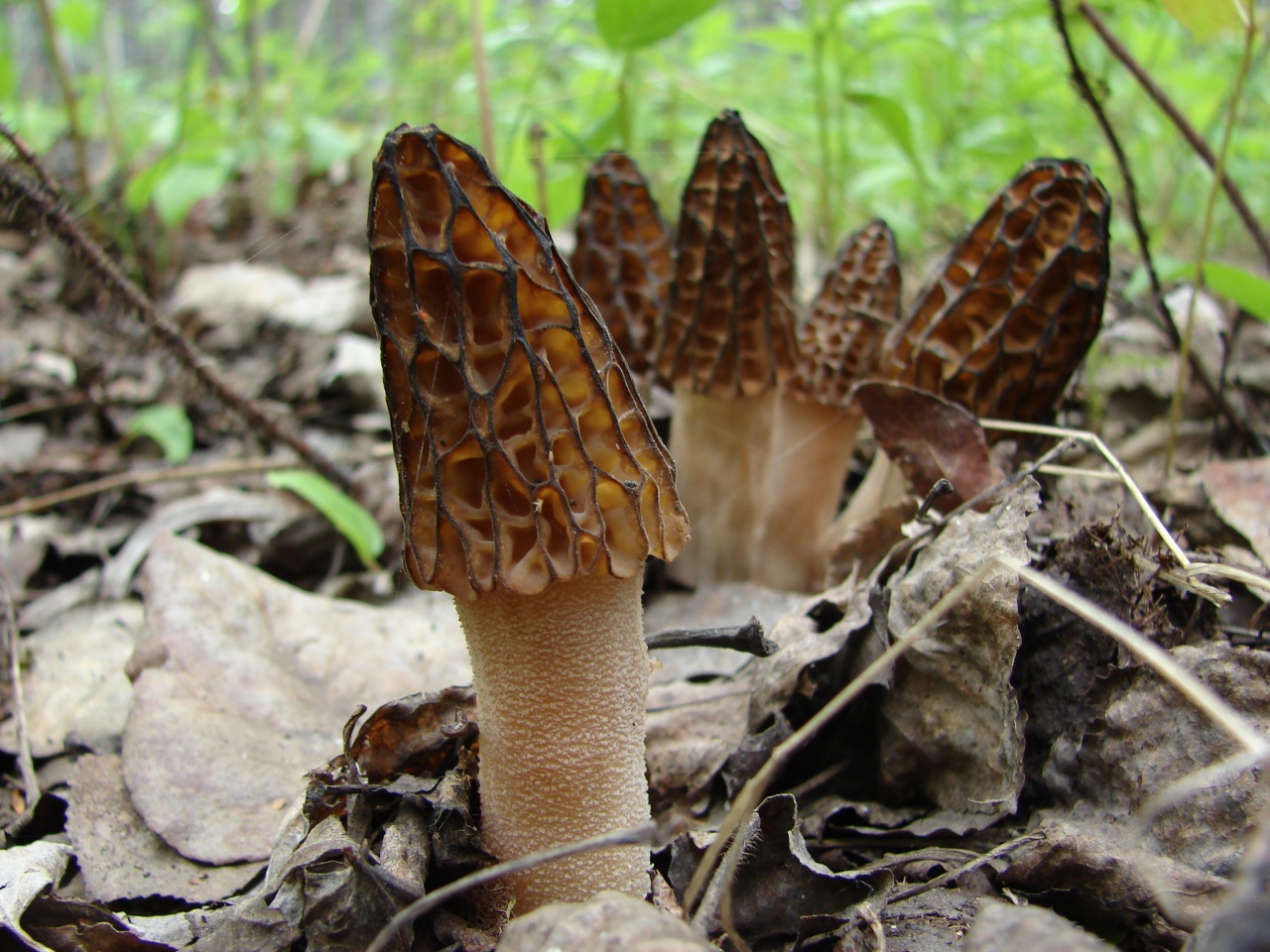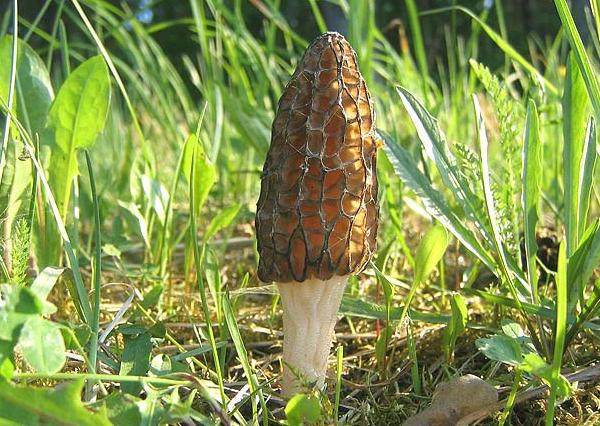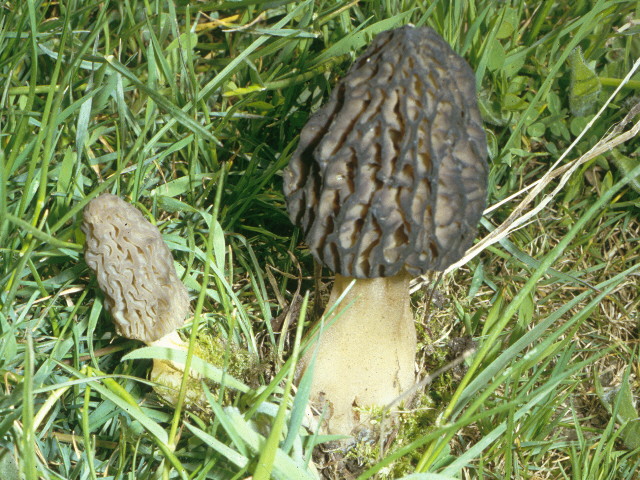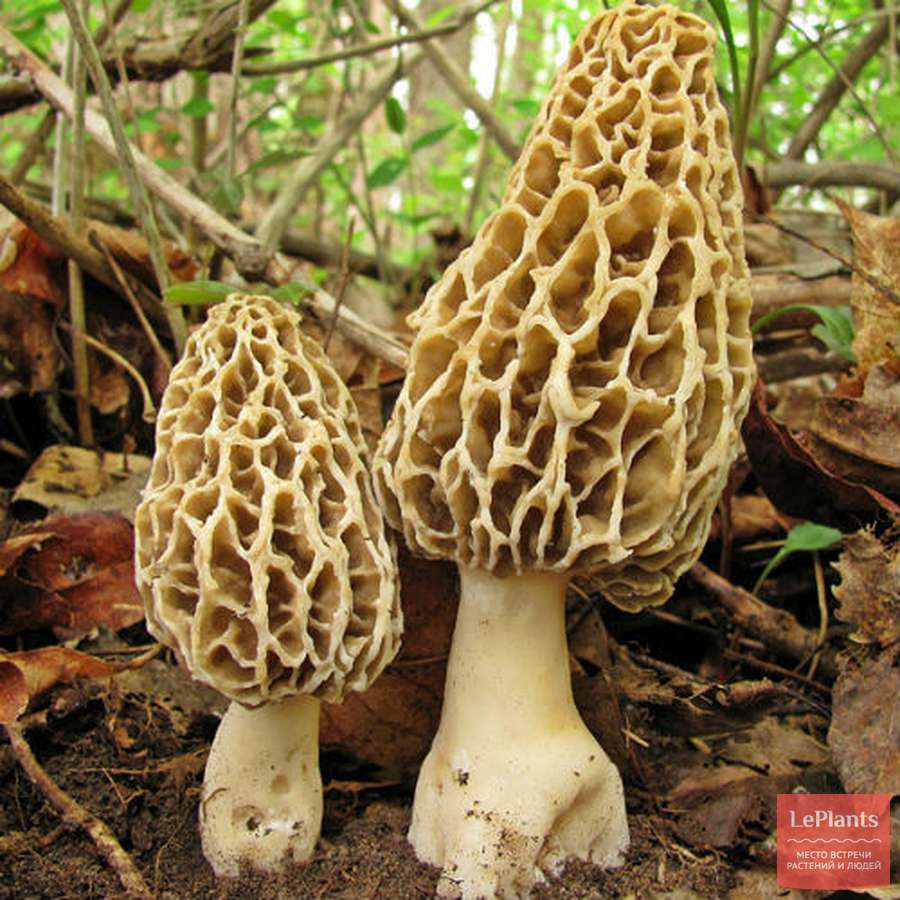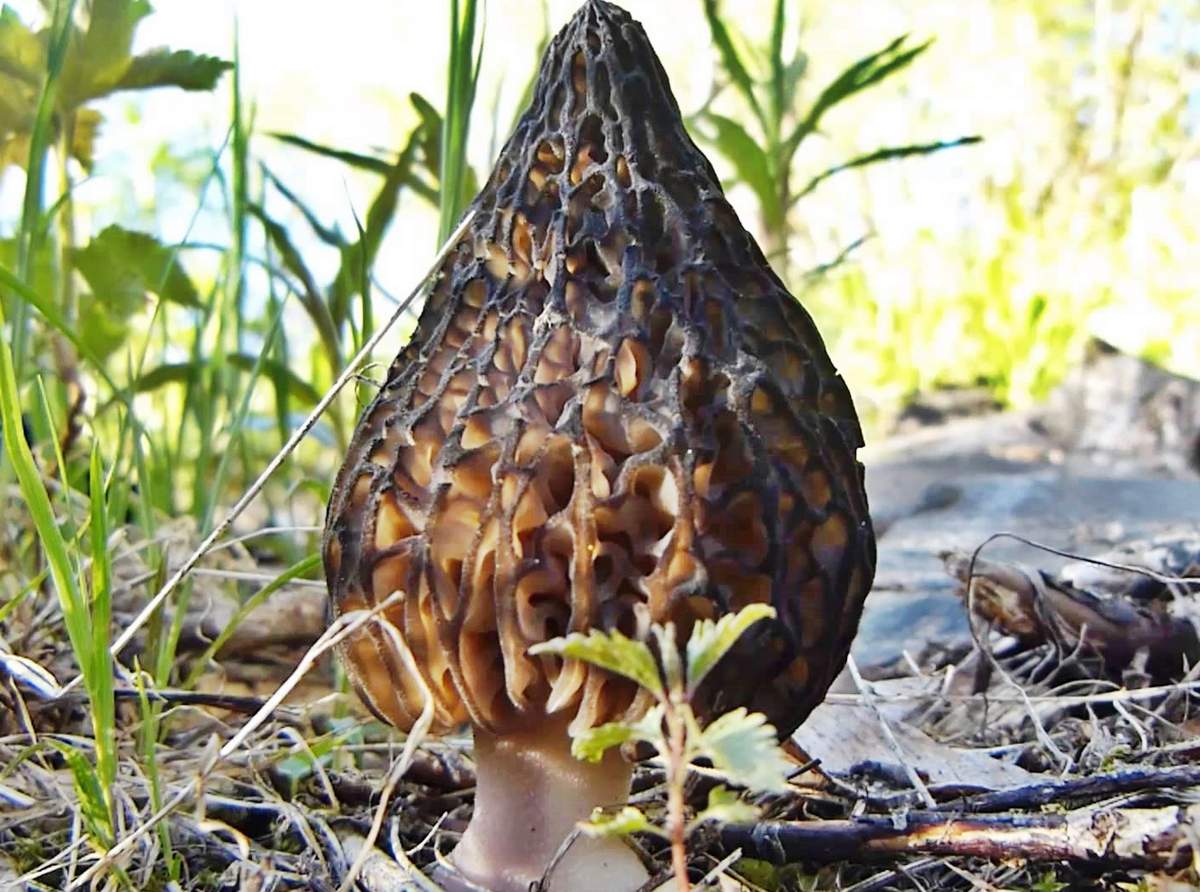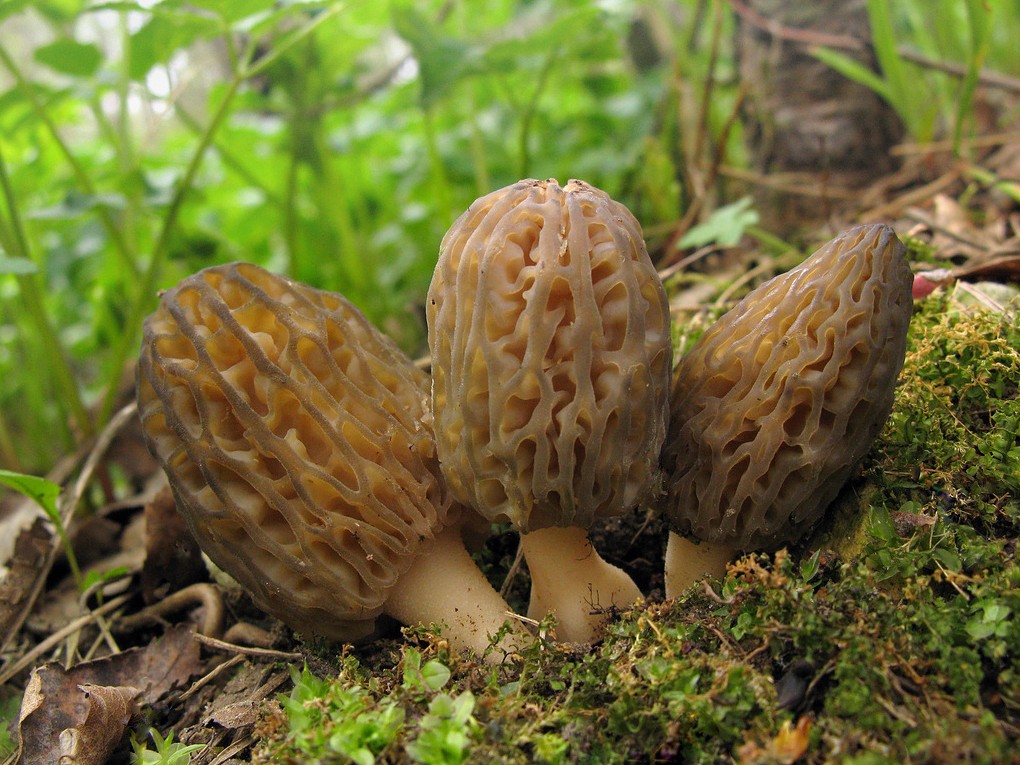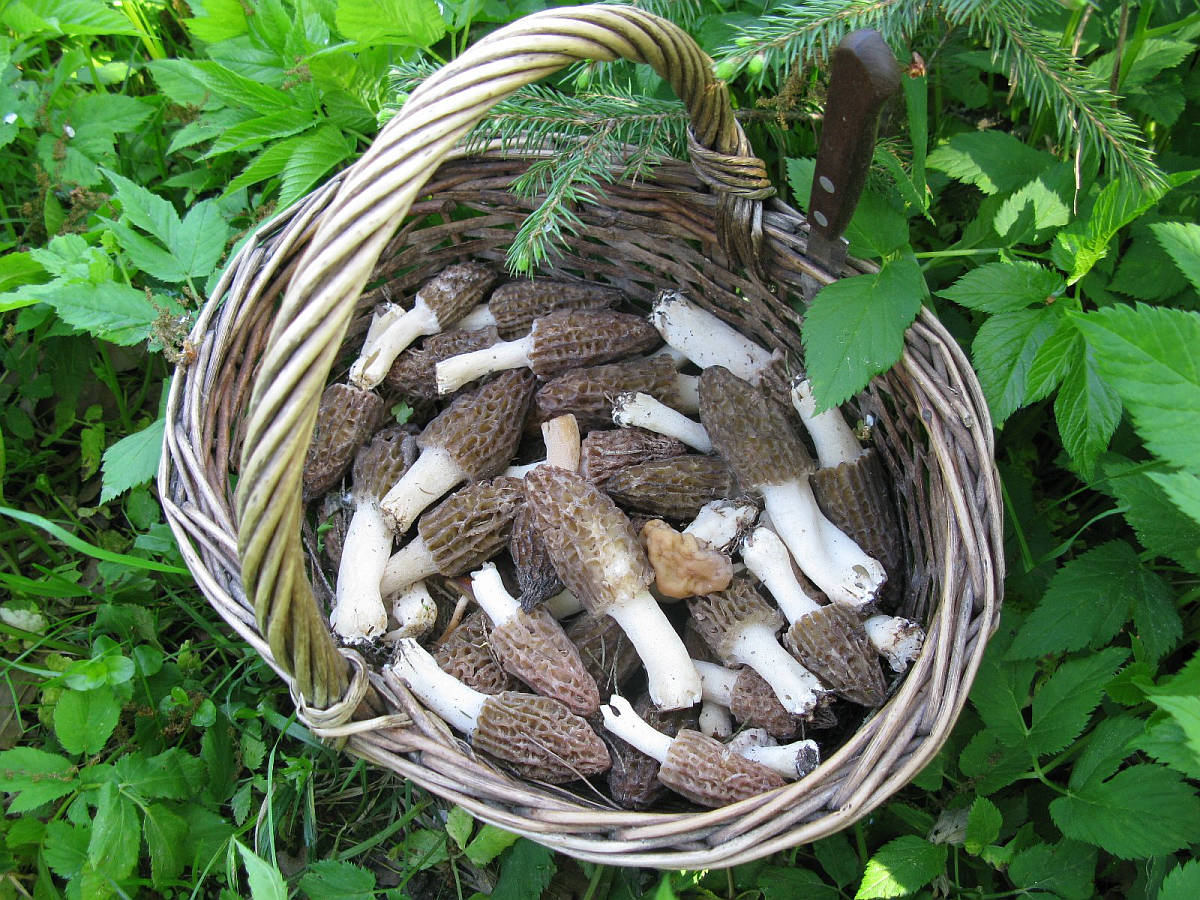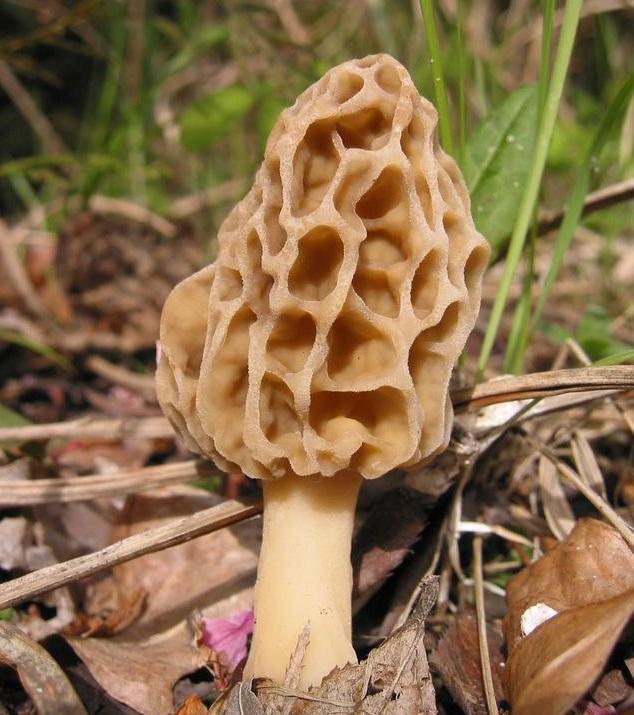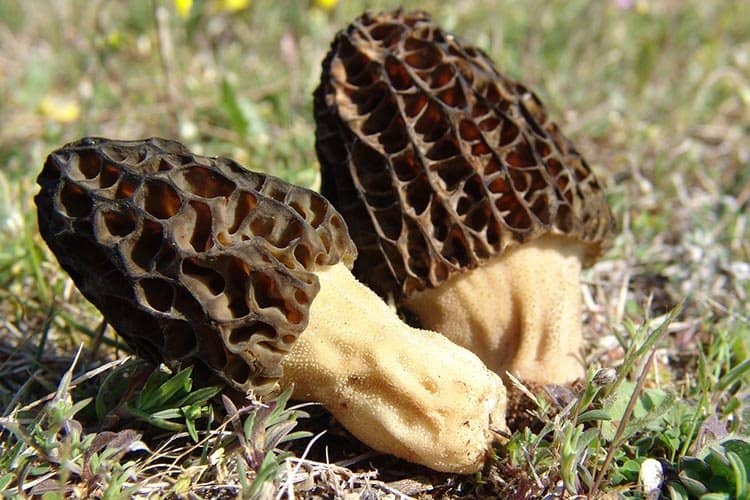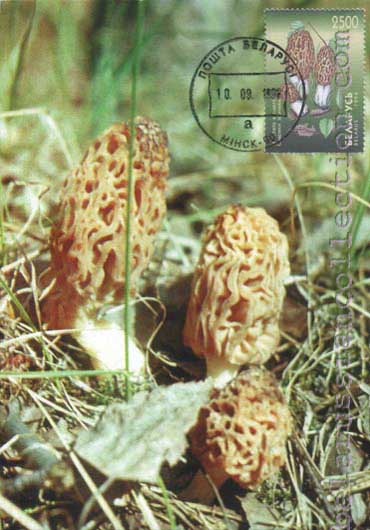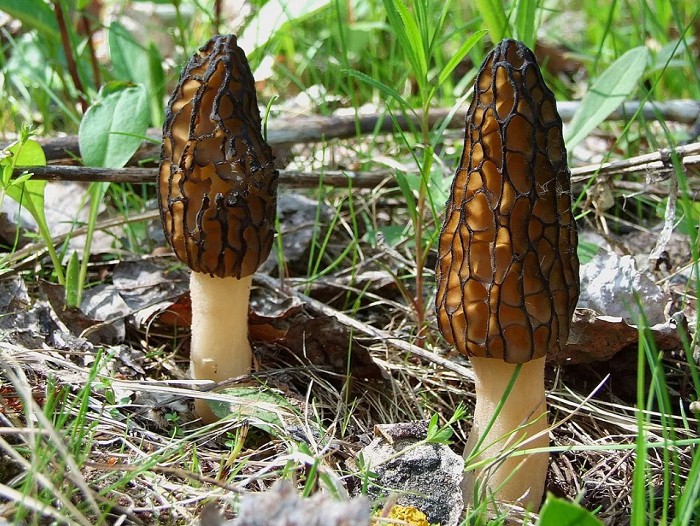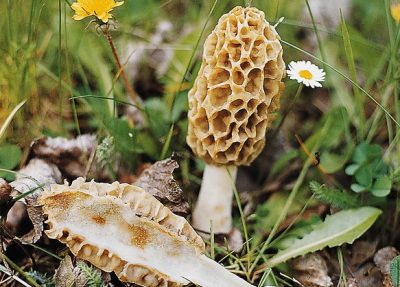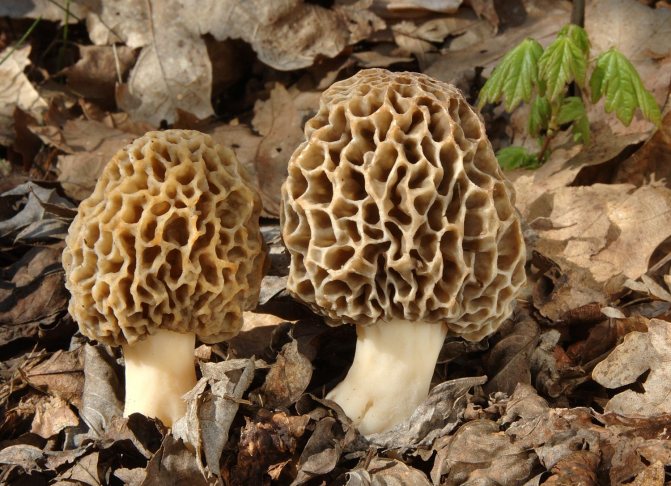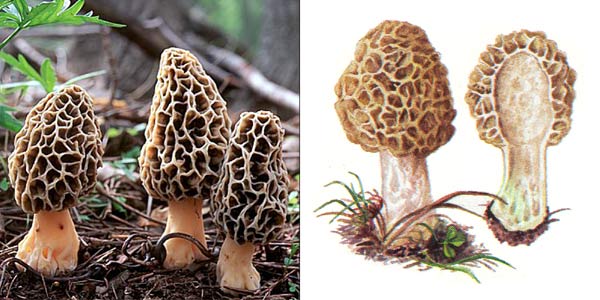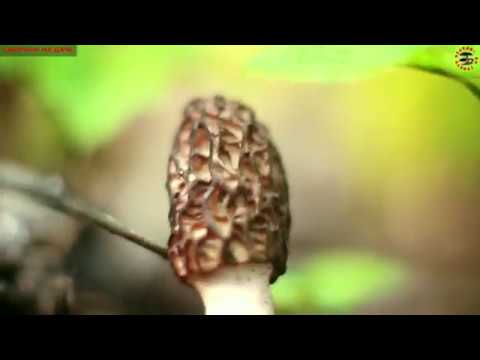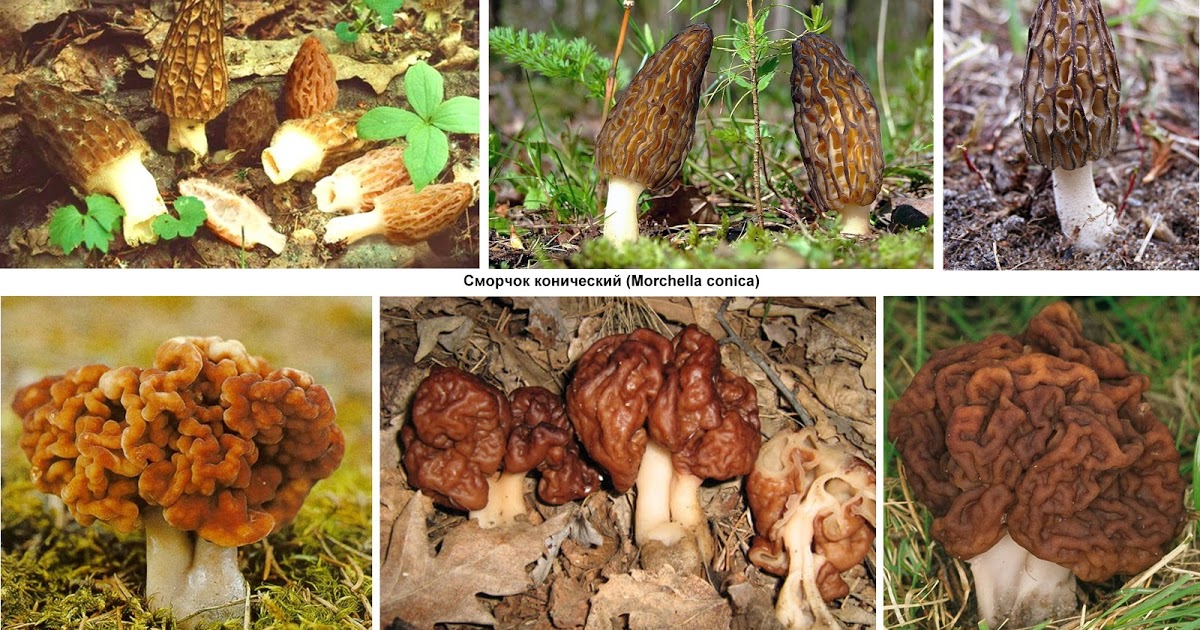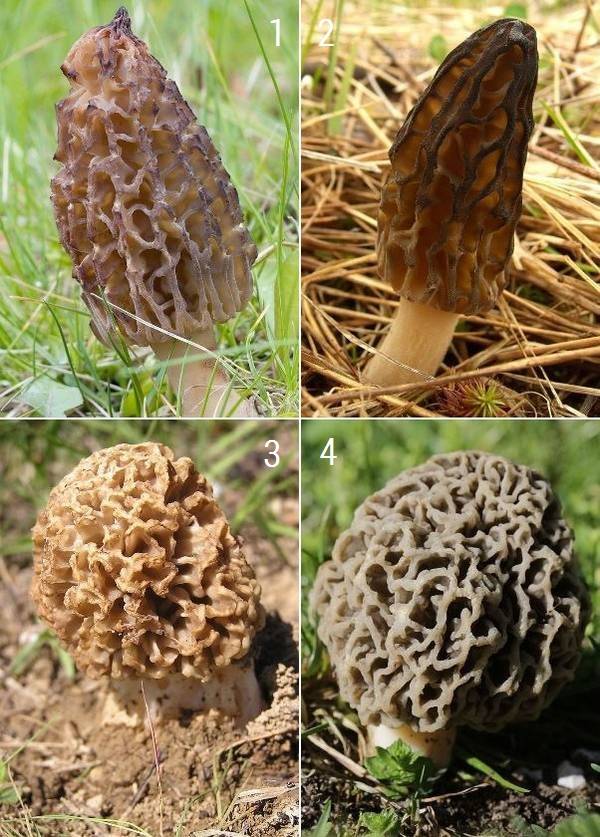What family do they belong to?
Despite frequent confusion in names, mushrooms can be distinguished not only by name and distinctive features, but also by classification. Lines - belong to the genus of marsupials of the Discinovye family. Morels are edible varieties of the morel genus, translated into Latin as Phallus esculentus. The unusual name is associated with the shape of the mushroom, visually reminiscent of the outlines of manhood.
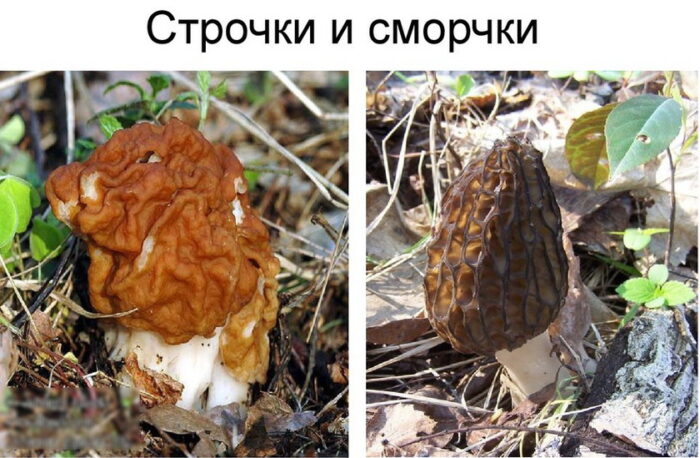
Scientific information is certainly useful, but not very important when collecting. It is much more important for the mushroom picker to find out whether the morel and the line are different by examining whether they are edible or not, as well as visual photos of the differences that correspond to the classification of each family. The comparative description presented in the pictures will allow even a beginner to determine the difference when going to a mushroom picker.
It has been scientifically proven that only morels can be eaten. It is better to bypass the lines in order to avoid poisoning and intoxication of the body. Due to statistics confirming a large number of poisonings, you should not risk your health and well-being of relatives and friends.
Description morel
The real morel belongs to the third category, it is considered a tasty mushroom, but it belongs to conditionally edible. Morel is real very much loved by Americans, and in 1984 it was even officially recognized as a mushroom of Minnesota. Morels are also in demand in Russia and European countries - they have good taste and are easy to recognize in forest glades.
Let's consider what characteristics you can recognize morels and what you should pay attention to
Hat
Morels have an unusual cap shape and this makes them stand out from other species. As a rule, morels have a spherical or ovoid cap, medium in size and very light. At the edges, the cap fits snugly against the leg, and its maximum diameter is 8 cm, but such large specimens are rare. As a rule, a morel cap grows up to 7 cm in height, and from 3 cm to 6 cm in width. Difficulties in identification may arise due to the variability of morels - they can be colored in different shades. There are specimens with a yellow-ocher, grayish and even brown cap. Mature mushrooms may become darker.
But, it is important to pay attention to the surface of the cap - in edible morels, it is necessarily wrinkled, with many honeycomb grooves, separated by folds. The surface of the cap is similar to that of a honeycomb. It is noteworthy that the folds separating the grooves may be slightly darker or colored in a more saturated shade than the cells themselves.
Spores are yellowish in color and can be ovoid or granular.
It is noteworthy that the folds separating the grooves may be slightly darker or colored in a more saturated shade than the cells themselves. Spores are yellowish in color and can be ovoid or granular.
Leg
In morels, the legs have a cylindrical shape, they can slightly expand towards the base. The inside of the cap is hollow, the void inside is connected to the cavity of the cap. Initially, the legs of young mushrooms are white, rarely with a grayish tint. But, as it grows, the leg darkens, acquires a creamy or brownish tint. In old mushrooms, the base of the stem is covered with gray-brown flakes.
Morel
Pulp
The pulp of the mushroom is brittle, loose and dry, has a waxy texture, and crumbles easily. As a rule, the flesh is white, but in old mushrooms it can turn yellow, later even acquire an ocher tint. The taste of the pulp is light, mushroom and unobtrusive, the smell is barely noticeable, combines mushroom and sweetish notes.
Morels description
Morel ordinary, or edible, real (Morchella esculenta). Individual large morels can weigh up to 500 g. Such mushrooms are very impressive in size, since the inside of the mushroom is hollow.The cap (usually 3 - 5 cm in diameter) is ovoid or ovate-rounded, 3 - 6 cm high. At the edges it fuses with the stem. Outside, the cap is yellow-brown, brown, occasionally gray-brown. Uneven, wavy “ribs” create a mesh-like surface with deep, convoluted cells of irregular shape. The leg is fragile, up to 2 cm in diameter, cylindrical (up to 7 cm long), hollow inside, whitish or brownish, smooth or with longitudinal grooves (dents). At the base, it expands. The pulp is thin, fragile, waxy. The height of the cap and legs "by eye" are almost the same. In the cut, the whole morel is hollow inside.
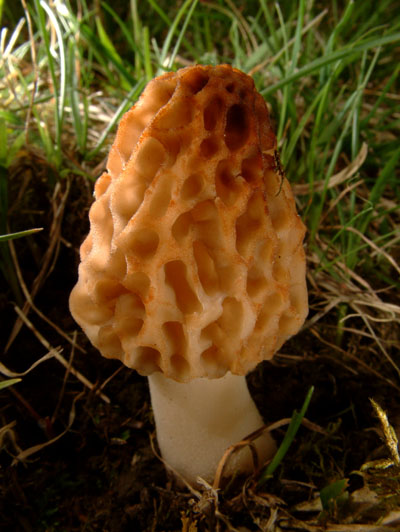
Morel common, or edible, photo from Wikipedia
The conical morel (Morchella conica) is more shade-tolerant and moisture-loving than its closest relative, the common morel. It is also hollow inside. It has a brownish or brownish-gray cap fused with a leg, which turns brown over time. The cap is up to 5 cm in diameter, up to 10 cm high, conical or elongated-ovoid with regular oblong cells. Vertical (with horizontal baffles) "ribs" can be darker, even almost black. The pulp is waxy, with a weak mushroom odor. The leg (2 - 5 cm long and 1.5 - 3 cm in diameter) is cylindrical, hollow, whitish or yellowish, fragile. It is smooth or with dents (folds) in a longitudinal shape. It is stocky or tapered at the base. Some consider the taste of conical morel to be mediocre, others value it above other morels.
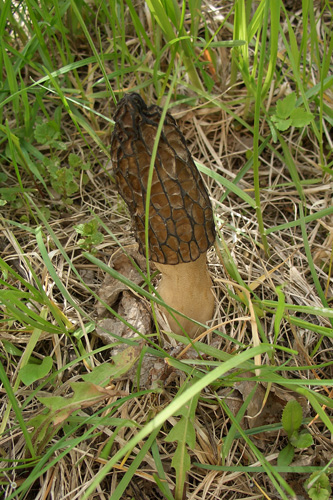
Morel conical
There are other edible morels. This is an edible verpa, or morel cap (Verpa bohemica). It grows abundantly in deciduous forests, especially under aspen trees. This mushroom has a brown or yellowish-brown cap up to 5 cm (usually 2 - 3 cm) in diameter, planted on an elongated (6 - 14 cm) cylindrical whitish or whitish-yellowish stem (up to 2 cm in diameter). The hat resembles a bell with a folded surface and wavy-sinuous edges. The cap is attached to the leg only in the central part. The stem can be smooth or have pubescence, small scales. Inside it is hollow, in young mushrooms it is filled with "cotton wool". This mushroom with a pleasant smell also needs to be boiled beforehand.
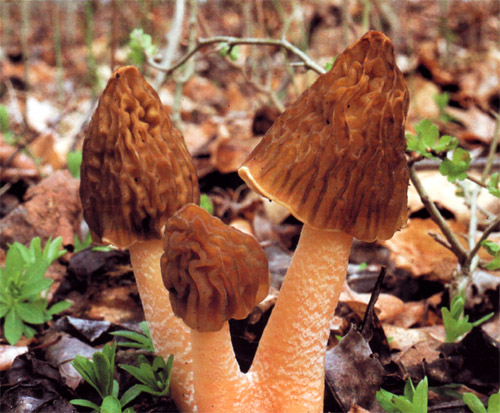
Morel cap, photo from the site.
Rarer is a tall morel (Morchella elata) with a height of 25 - 30 cm, with an olive-brown conical cap. It appears in grassy places, loves forest edges, coniferous forests (especially in the mountains) and fireplaces.
Quite rare is the steppe morel (Morchella steppicola), which can be found in the wormwood steppes of Central Asia. The mushroom is edible.
Romantic sarcoscife
Now my dog and I are walking through the forest in the foothills of the Caucasus, in the vicinity of Goryachiy Klyuch. There is a forest behind our house, therefore part of the plot has both garden and undergrowth vegetation. It was there, at the end of February, not far from the flowering cyclamenchiks, remarkably bright red "cups" began to appear. Among the first green leaves in the fallen leaves, they look very touching.
Scarlet sarcoscine (Sarcoscypha coccinea), or Scarlet elf bowl (what a suitable poetic name for a mushroom the size of a two-ruble coin!). An edible mushroom that grows exclusively in ecologically clean places (balm for the soul of the owner of the site). Very similar to the Austrian elf cup, but it grows to the north.
One or the other, or even both at once, are found in early spring almost throughout the country. The difference between the species is seen, as a rule, by specialists; simple mushroom pickers do not pay attention to the shape of the hairs of the outer surface. Moreover, you can only see them under a magnifying glass.
In fact, these mushrooms grow up to 7 cm, but I have not come across such. And although they are edible, they have a rubbery-cartilaginous structure and no special taste. Stew in sour cream or bake with cheese.
But this mushroom has remarkable decorative qualities.In Europe, in early spring, they make small gift baskets with green moss and sarkoscifs. A good alternative to flowers that are no longer in short supply. It is impossible to confuse sarcoscifa with other mushrooms.
Sarkoscif scarlet, or Scarlet elf bowl (Sarcoscypha coccinea). Claude-Alain Berdoz
Danger
The product contains a poisonous substance - gyromitrin. The toxic properties of the toxin appear after 5-10 hours. The clinical picture includes symptoms typical of intoxication:
- nausea, ending with an attack of vomiting;
- loose stools;
- severe pain and cramps in the abdomen;
- headache;
- yellowing of the skin;
- increased body temperature;
- the appearance of chills and general weakness;
- violation of consciousness.
In the absence of first aid and treatment, after consuming an improperly prepared product, dangerous complications leading to death can occur.
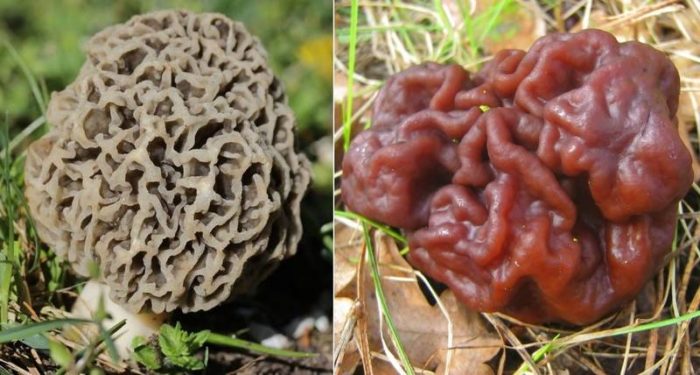 Morels have deep wrinkles on the surface of the cap
Morels have deep wrinkles on the surface of the cap
How to distinguish edible morel from stitching
In spring, mushrooms appear in the forest that look like morels. They are called lines. The main differences are:
- short wide leg;
- rounded flattened shape of the cap;
- deep wrinkles on the surface of the cap, making it look like a walnut kernel;
- the presence of a large number of septa in the body.
The following signs help to distinguish an edible mushroom from a poisonous brother:
- cellular structure of the cap;
- high leg height;
- the presence of voids in the body of the fungus.
The lines contain toxins that negatively affect the state of the liver and central nervous system. Some experts believe that poisoning with these mushrooms can trigger the development of a malignant tumor.
What are morel mushrooms?
What a morel mushroom is, a photo and a description, what medicinal properties it has, all this is of great interest to those who lead a healthy lifestyle, monitor their health, and are interested in folk methods of treatment, including with the help of mushrooms. So we will try to answer these questions in the following article.
So:
Edible morel (Latin Morchella esculenta) is an edible mushroom of the morel genus of the morel family.
Morel is an early spring mushroom that appears in late April - early May in deciduous, coniferous and mixed forests on fertile soils rich in humus and lime. It is often found in wildfires, on sandy and mossy places, on forest edges, in the aisles of plantings, along roads, ditches, in clearings.
The cap is buffy-yellow, yellow-brown or light brown, ovoid, with rounded or polygonal, honeycomb-like cells, adhered to the stem along the edge. Morels have no plates. The pulp is waxy, white, tender, brittle, with a pleasant smell and taste.
Leg up to 8 cm long and up to 2 cm thick, cylindrical, slightly widened at the bottom, hollow, whitish, yellowish or brownish.
The mushroom is conditionally edible, but very tasty. It can be boiled, fried, stewed, dried for future use.
Morels contain a poisonous substance - Helvelic acid. Before cooking, boil them in water for 5-10 minutes, drain the broth, squeeze the mushrooms and rinse several times in hot water. After that, they become completely harmless, because gelwellic acid dissolves well in hot water. When dried, toxic substances also disappear. However, dried mushrooms are recommended to be eaten after 3-4 weeks of drying.
The amount of toxic substances accumulated by morels depends on the terrain and weather conditions. Mushrooms can contain both little and a lot of poison, so it is not recommended to eat them more than 200 g per day.
Interesting Morels Facts
- Morels have long been considered inedible and even poisonous mushrooms. A mention of this can be found in the work of A. Dumas "The Count of Monte Cristo".
- European scientists have proven that morel preparations strengthen weakened eye muscles, and they do this much more effectively than substances prepared on the basis of blueberries.
- Residents of the United States and Europe consider morel to be a delicious mushroom that is in no way inferior in taste to the famous truffle. At the beginning of the last century, Great Britain recognized this mushroom as a national treasure, and the Minnesota authorities in the 80s of the XX century made the morel an official symbol of the state.
- Morels are rarely found in the same place for two years in a row. Scientists cannot solve their secrets and find out how their mycelium travels over considerable distances.
- Indigo is a natural dark blue pigment produced by the yellow morel. Its safe use in the food, pharmaceutical and light industries has been scientifically proven.
Beanie Morel Verpa bohemica
Beanie Morel Verpa bohemica
A relative of true morels, although it belongs to a different genus. It is inferior in taste to real morels, but also appreciated among mushroom pickers. It is also called "Cap", "Czech Verpa" and "Tender Morel".
Appearance
The cap has the shape of a cap, with a height of 2 to 5, a diameter of 2 to 4 cm. It is not attached to the bottom of the leg and is very easily removed from it. The hat is covered with vertical folded wrinkles. The color changes from brownish-chocolate in young mushrooms to yellowish-ocher in mature ones.
The stem is smooth and slightly curved, 6 to 10 in length and 1.5 to 2.5 cm in diameter. On the sides it is slightly flattened and covered with small scales. In young mushrooms, the leg is whole, in mature mushrooms, with a cavity inside.
The pulp is light, brittle and thin, it smells very nice. The taste is poorly expressed.
When and where to collect the Morechkovaya Hat
This mushroom bears fruit only from the very end of April and the first half of May, so hunting for it is especially exciting - you need to catch it in time. He is very fond of dampness and does not tolerate the absence of moisture, therefore it grows on flooded soil, in light deciduous and mixed forests, next to aspens, lindens and birches. Look for it in the lowlands near ditches and water pits. A lucky mushroom picker can expect a gift - Caps sometimes grow in a huge herd of up to 80 pieces.
Morels are very tasty mushrooms, when they are fried, such an aroma spreads around the house that people saliva like Pavlov's dog
But there is one IMPORTANT RULE in their preparation.
There is nothing wrong with that, however. The acid is completely destroyed in morels after boiling for 15-20 minutes. In this case, the broth must be poured out - the acid has gone into it. Before boiling, it doesn't hurt to soak the mushrooms for half an hour in cold water - this will wash them off and help eliminate harmful substances in the mushrooms.
Boiled - disinfected morels can be cooked in any way you want. They are good both stewed and fried, and in mushroom soup.
Can morels be grown at home on a windowsill?
Many lovers of quiet hunting dream of growing the first mushrooms at home in a bowl. Delicious taste combined with an unusual appearance and captivating aroma are indisputable criteria in comparison with the common mushrooms and oyster mushrooms.

Unfortunately, the dream can become a reality only in one case, if an experienced mushroom picker is engaged in the reproduction of morels in a summer cottage or in the forest adjacent to the house. Real germination conditions will allow you to get good fruits within 6 months from the moment of planting.
In order to grow them, small parts of morels should be sown throughout the territory, watered and covered with resin. Before the start of frost, it is recommended to cover the landing site with coniferous sawdust or dry straw. In the middle of spring, at the place of the fill, the first mushrooms hatch, bearing fruit for 25-40 days.
For re-fruiting, crops do not need to be sown again. Rather, learn how to cut with a knife while completing complementary foods in the autumn months. As a fertilizer, apple juice diluted in half with water or food peels of fruits or vegetables are suitable.
Reproduction by mycelium is more complex. The material is not easy to acquire.It can be rarely found in shops and mushroom pickers who grow mushrooms as a business. The material is scattered in shady areas, near the growth of deciduous trees. Sowing near fruit crops should be avoided. The proliferation of mycelium will negatively affect the harvest of berries and fruits.
The first harvest when using mycelium appears only a year later in the spring months. You can contribute to the abundance of morels by following the above instructions.
Variety of stitches, from conditionally edible to poisonous
The lines, like all mushrooms, have varieties, and most importantly, they differ not only in edibility, but also in external criteria. On the territory of Russia, the following types are most often found:
No. 1 - ordinary line
The traditional representative of the species, or gyromitra esculenta, rarely grows in the forest belt. Fungi are most often formed in open areas rich in sandy soil. Fruiting falls at the end of March and lasts until mid-May.
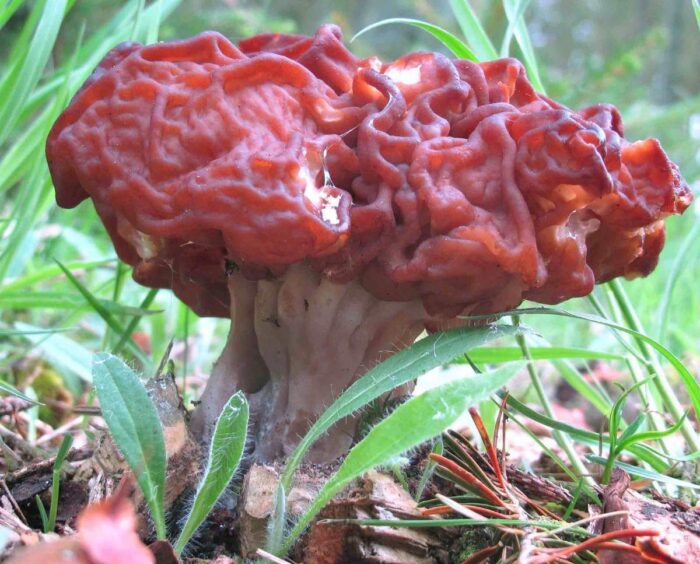
The hat is medium-sized, reaching no more than 25 cm in width. The shape is rounded, not quite even, colored in a chestnut shade. Less commonly, it may be dark brown.
The leg is elongated, hidden more than half in the ground. Its height rarely exceeds 10 cm, and its width is 8 cm. Often it is flattened, empty from the inside.
The aroma is moderately mushroom, it can confuse the mushroom picker, deceiving his credulity.
No. 2 - giant line
The large-fruited mushroom, or gyromitra gigas, has an external outline that resembles the shape of the brain. A sinuous pattern on a large cap and a short stalk indicates the conditional edibility of the mushroom.
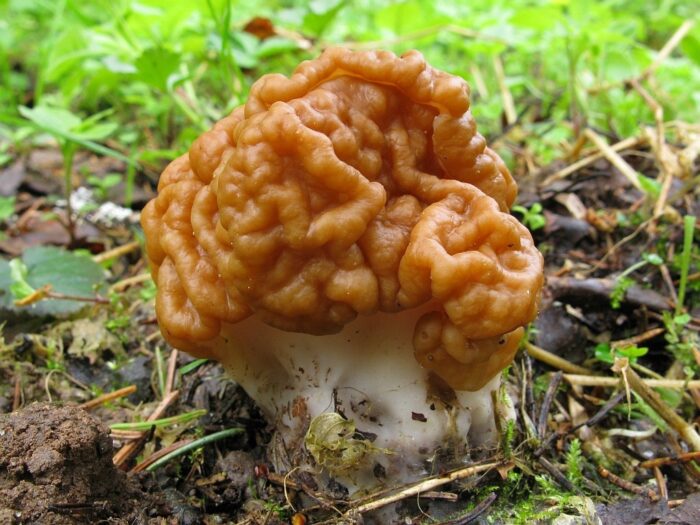
The hat has an unusual pattern similar to the kernel of a pine nut. The cavity is empty, of an uneven circular shape. Differs in the presence of folds. The color scheme is dirty yellow, rarely red. The width can be up to 65 cm.
The leg is extremely short, no higher than 4 cm. In a humid environment, it is often hidden in the ground. The color is snow-white. The inside is always empty.
Compared to other varieties, giant stitches can be eaten after prolonged heat treatment. Their pulp contains the minimum amount of gyromitrin that is permissible for humans after boiling. Of course, not all mushroom pickers agree with this opinion. Experienced mushroom lovers bypass any lines, trying to choose only proven mushrooms belonging to edible species.
You can find a giant line in the spring when planting birches. In comparison with other varieties, its structure is larger, and the cap is light, closer to a yellow tone. The aroma is quite pleasant, reminiscent of lines.
No. 3 - autumn line
Despite the attitude to early mushrooms that sprout in spring, gyromitra infula or autumn line is considered horn-shaped by the people, due to its unusual structure. The mushroom cap resembles the horns of an animal, reaching a length of more than 10-12 cm. There are folds. The color range of young mushrooms is light brown, becoming darker with age. In the lines growing in the fall, you can count 2-3 horns, connected together, as if fused. The coating is velvety to the touch, reminiscent of a noble fabric.
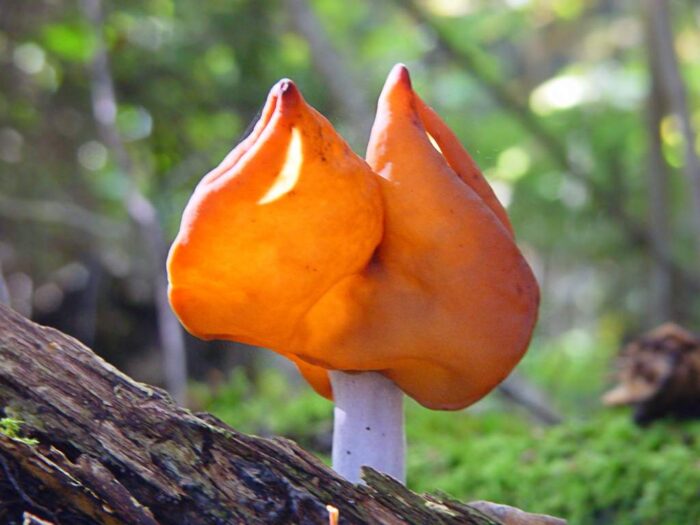
Leg length - varies from 4 to 11 cm. Width - no more than 2 cm. Inside, the mushroom is empty and slightly flattened. The color range can be either white or grayish or light brown. The shape is cylindrical.
When pressed, the mushroom crumbles. The fragile pulp proves once again that it is not worth collecting lines because of the high toxicity. It is preferable to choose conditionally and edible mushrooms that germinate from late June to early September.
Description of steppe morel
Steppe morel is the largest among Russian morels. His hat is spherical or egg-shaped, its diameter is 2-10 centimeters, and sometimes it reaches 15 centimeters, while the height corresponds to the diameter. The edge of the cap is adherent, it is hollow inside, it can be divided into sections.
The leg to which the cap is attached is very dense and short - its length does not exceed 1-2 centimeters, sometimes the leg may be absent altogether. The color of the leg is white with a cream shade. There are rare voids inside the leg. The pulp is quite elastic, whitish in color. Spore powder is white or light gray.
Growing places of steppe morels
Steppe morels grow in the European part of our country and in Central Asia. These mushrooms settle in the wormwood steppes. They bear fruit from April to June. When collecting, it is recommended to cut the morels with a knife so that a whole mycelium remains. To find these mushrooms, you have to visit the harvesting sites every day at the beginning of March, otherwise you can skip the beginning of the harvest, and after 3-4 days the season will end altogether.
Fruit bodies in steppe morels develop very quickly, and their lifespan is only 5-7 days, in comparison with ordinary "long-playing" morels, this is extremely small.
In years with humid winters, steppe morels can form "witch circles", consisting of about 20 fruiting bodies, and the diameters of such circles reach 7-8 meters. In dry springs, mushrooms may not appear for several years in a row.
Edibility of steppe morels
Steppe morels are delicious edible mushrooms. They are mushroom delicacies, from which you can prepare independent dishes, as well as sauces and side dishes.
Drying steppe morels is not difficult at all, since they are the densest among other morels. These fungi have practically no internal cavities. The pulp of the steppe morels is similar in consistency to the pulp of the porcini mushroom. Before drying, these mushrooms must be blown out, since there are too many folds and convolutions in their caps, into which sand and dirt are clogged. The sand from the mushrooms simply cannot be shaken out, they are first dried a little in the sun, then they are blown out, and only then they are dried.
Also, these mushrooms can be dried in a special electric dryer, but in the sun they will have a more pronounced mushroom aroma.
If the dried morel is soaked for 8-10 hours, it will completely restore its structure, volume and shape. Steppe morels do not need preliminary boiling. They go well with meat, poultry and fish. Steppe morel powder makes an excellent seasoning for broths, sauces, vegetable and meat dishes. In addition, very tasty mushroom kebabs are obtained from steppe morels.
Other morels
Morel conical - conditionally edible mushroom. His hat is elongated and conical. Its diameter does not exceed 3 centimeters, and its height reaches 10 centimeters. The color of the cap is reddish-brown with a gray or green tint, sometimes the cap may be black. Its surface is cellular, outwardly it looks like a honeycomb. The leg is straight, hollow, white or yellowish.
Conical morels grow on well-heated soils, in clearings and forest fires. Often these mushrooms settle in aspen forests. They bear fruit from April to May. The flesh of conical morels is tasty and soft, but it requires preliminary boiling for 15 minutes.
Morel cap, or cap, or tender morel is a conditionally edible mushroom. A small cap has the shape of a cap, its diameter is 2-4 centimeters, and its height is 2-5 centimeters. The color of the cap at a young age is chocolate brown, and in mature it becomes ocher yellow. The leg is smooth, most often curved, its length is 6-10 centimeters, and its thickness reaches 2.5 centimeters. The leg is often flattened on the sides. With age, an enlarged cavity forms in the leg. The cap and the leg are not firmly connected. The color of the leg is cream or white.
The morel cap is the smallest species in the morel family. These mushrooms bear fruit in mid-May. They often grow among young aspens and lindens. They give preference to poor soils. Under favorable conditions, morel caps are found in large numbers.
Morel hats are eaten only after preliminary boiling, then they can be fried, boiled and cooked in any way.It takes at least a month to dry a morel cap.


